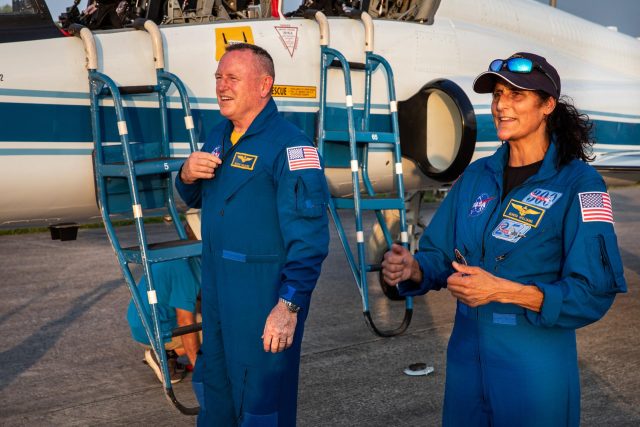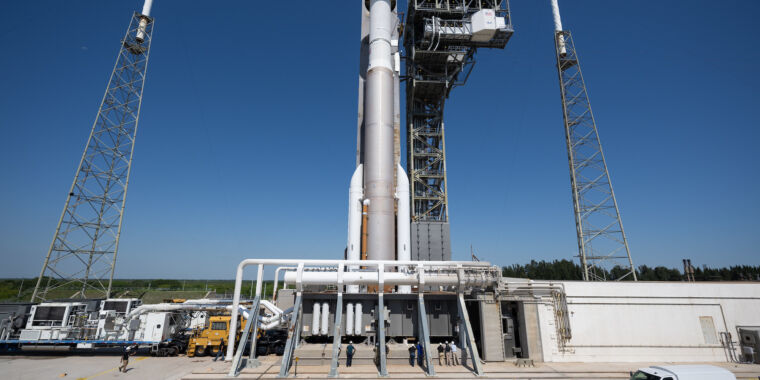
NASA and Boeing officials are ready for a second attempt to launch the first crewed test flight of the Starliner spacecraft on Saturday from the Cape Canaveral Space Force Station, Florida.
Liftoff of Boeing’s Starliner, encapsulated atop a United Launch Alliance Atlas V rocket, is scheduled for 12:25 p.m. EDT (4:25 p.m. UTC). NASA Commander Butch Wilmore and Pilot Suni Williams, both veteran astronauts, will take the Starliner spacecraft on its first trip into low Earth orbit with a crew on board.
The first crewed flight of a new spacecraft is not an everyday event. Starliner is the sixth orbiter-class crew launch in the history of the US space program, following SpaceX’s Mercury, Gemini, Apollo, and SpaceX’s Crew Dragon. NASA signed a $4.2 billion contract with Boeing in 2014 to develop the Starliner, but the project is running years behind schedule and has cost Boeing nearly $1.5 billion in cost overruns. Meanwhile, SpaceX won a contract at the same time as Boeing and began launching astronauts on Crew Dragon four years ago this week.
Now, it’s finally Starliner’s turn. A successful crew test flight would set the stage for six operational Starliner flights to transport astronauts to and from the International Space Station (ISS).
Assuming the test flight lands on Saturday, the spacecraft is expected to dock with the ISS at 1:50 p.m. EDT (5:50 p.m. UTC) on Sunday to begin a stay of at least eight days. Once managers are satisfied that the mission has achieved all planned test objectives and pending good weather conditions at the Starliner landing site in the western United States, the spacecraft will leave the station and return to Earth for a parachute landing. If the mission launches on Saturday, the earliest nominal landing date will be Monday, June 10.
Wilmore and Williams have been here before. On May 6, the astronauts strapped into their seats inside the Starliner cabin awaiting departure on a flight to the International Space Station. A valve malfunction on the Atlas V rocket prevented the launch that day, and officials then discovered a helium leak in the Starliner’s service module that delayed the mission until this weekend.
It flies as it is
After weeks of reviews and analysis, managers determined that the Starliner is safe to fly as is with the leak. The spacecraft uses helium gas to pressurize its propulsion system and propel hydrazine and nitrous oxide propellants from internal tanks to the capsule’s maneuvering thrusters.
“When we looked at this problem, it didn’t come to the trade,” said Mark Nappi, Boeing vice president and program manager for the Starliner. “It came down to: Is it safe or not? And it is safe, and that’s why we decided we can fly with what we have.”
Ground teams traced the leak to a flange on one of the four doghouse-shaped thrusters around the perimeter of the Starliner spacecraft’s service module. In a worst-case scenario, if the condition worsened in flight, ground controllers could isolate it by shutting off the manifold feeding the leak. If the leak doesn’t get worse, engineers are confident they can manage it without any major impact on the mission.
“We took a very good look at what our options were with this particular flange,” said Steve Stich, NASA’s commercial crew program manager, who oversees the agency’s contract with Boeing. The flange has a helium channel and lines for the ship’s toxic fuel and oxidizer, which makes repair “problematic,” Stich said.

To safely fix the leak, which officials believe is likely caused by a damaged seal, ground crews will have to detach the capsule from the Atlas V rocket, return it to a hangar and drain the fuel tanks. its fuel. That would probably push back the long-delayed Starliner test flight to later this year.
But the flow is relatively small and steady. “It’s about half a pound a day out of 50 pounds of total capacity in the tank,” Stich said.
“In our case, we have the difference in the helium tank, and we found it very difficult to understand that difference and to understand the worst cases, and we took the time to look at that data,” said Stich. “We really think we can manage this leak, like by looking at it before launch, and then if it gets bigger during the flight, we can manage it.”



